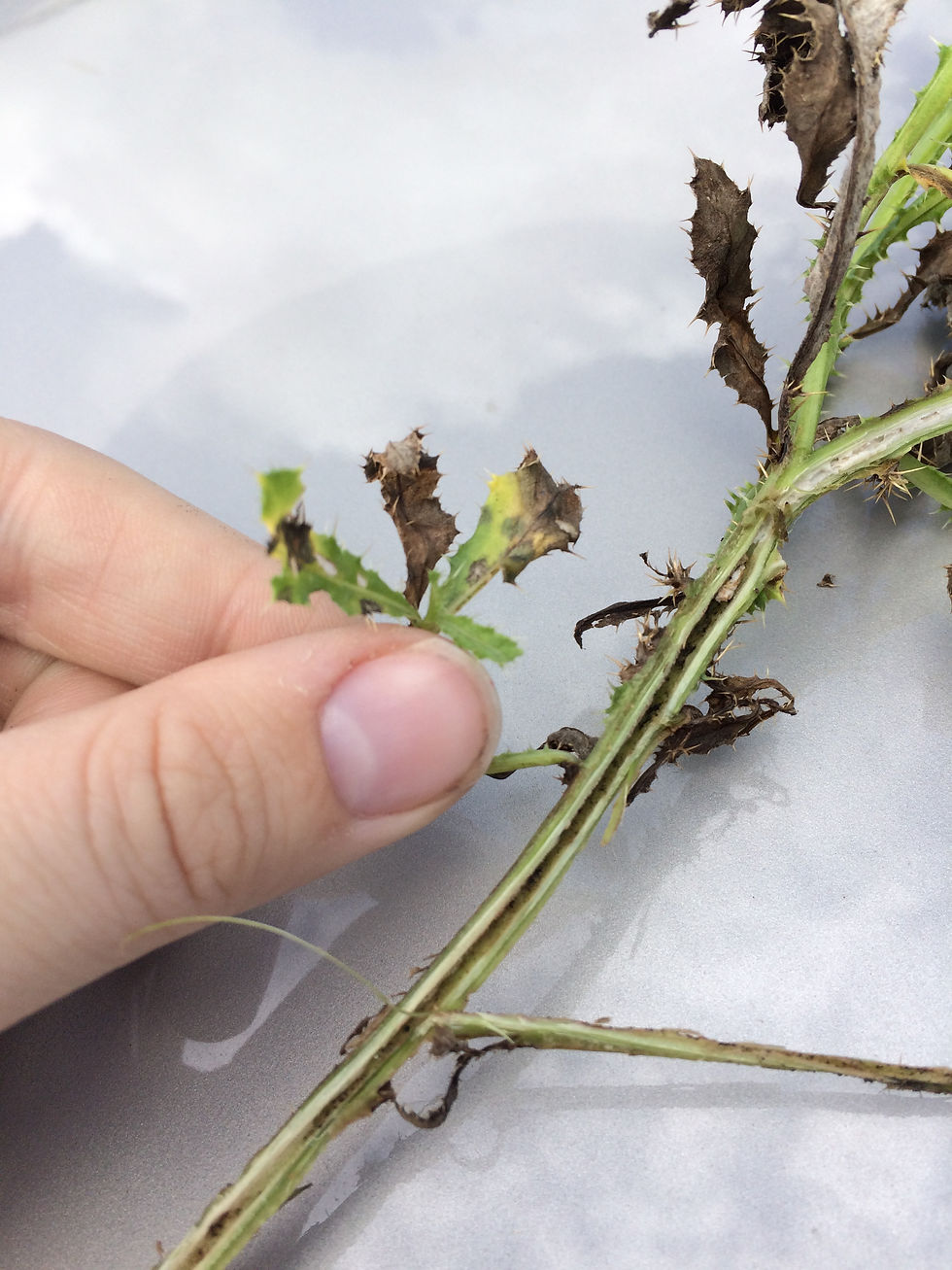Canada Thistle Mining Weevils: A Hopeful Biocontrol?

What if we could control Canada thistle without the use of herbicides that destroy our mixed legume and alfalfa stands?
And more importantly, save money in the long run without the expensive costs of annual herbicide application?
That is where the Canada Thistle Mining Weevil comes into play or Hadroplontus litura.
This weevil was first introduced to Canada from Europe in 1965 and feeds solely on Canada Thistle and a few close relatives. It attacks the rosettes of Canada Thistle in early spring before the thistle bolts. The adult weevils attack the foliage of the thistle plants and the larvae mine the inside of the stem.
In early summer when the larvae have fully fed, they emerge from the thistle through small exit holes that they chew near or just below ground level. They work their way into the soil, and enter the pupal stage in which they transform into adults. After two to three weeks, adults emerge from the soil in late June and July and feed on the thistle foliage until heavy frost occurs in the fall. Although foliage feeding seems to slow growth in the thistle, the larvae seem to have the biggest impact on thistle health.

FFGA is currently participating in a regional weevil trial. In 2012, 58 dishes (each containing up to 105 weevil individuals) were released into controlled sites across Alberta. The objectives of the project were to determine if the weevils would work, if a native population could be established in Alberta, if they are a cost effective control, and if additional weevils need to be added in consecutive years to follow.
Foothills set up two trial sites, one with Rod & Beth Vergouwen near Strathmore and the other with Phil & Pam Rowland near High River. The weevils have not been detected on the High River site since their fall 2012 release, leading us to believe they did not survive the winter. However, Foothills is keeping track of the progress near Strathmore as weevils and larvae have been found each year since.
In year 4 of the plot at Strathmore we are starting to see a reduction in thistle populations. Adult weevils were noted present and damaged and dead thistle were visible. In comparison to the control, the weevil plot noted a 100 plant decrease in the 25m2 plot.
This leads us to believe that the weevils are successful based on a long-term strategy and favorable temperature conditions upon release. The benefit of these creatures is their ability to be placed in sensitive areas such as riparian areas, native pastures, or organic pasture.
Foothills Forage is placing an order with the West Central Forage Association for weevils for August/September 2017. If you are interested in ordering weevils, please contact the WCFA office at (780) 727-4447. Price TBA based on USA exchange rate
Article and Photos By: Rachel McLean, Foothills Forage & Grazing Association
































